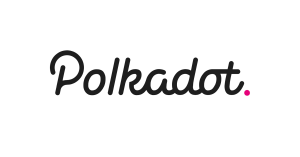You may have noticed that there are blockchain projects springing up with crazy food based names. Projects such as SushiSwap and Bakery Token have been in the news quite a bit recently. Today I’m talking about PancakeSwap and taking a deep-dive in to what it is and what it does. Sweet!

PancakeSwap is a Decentralized Exchange (DEX) that makes use of the Automated Market Maker (AMM) model to enable users to swap any BEP20 token for another using a liquidity pool.
Users can provide liquidity into these liquidity pools for a chance to earn a share of the platform’s trading fees (known as liquidity mining) and take advantage of its various DeFi products such as staking, farming, lottery and others.
CAKE is the cryptoasset for the platform and serves as a governance token. It also acts as a means of staking so users can earn more CAKE and the tokens of other projects. Users can also take part in the PancakeSwap lottery game.

History
In September 2020, a team of anonymous developers forked and ported the SushiSwap code to BSC (Binance Smart Chain). PancakeSwap and the CAKE token launched via a fair distribution to initial liquidity providers and early farmers on the platform.
The team chose to build on BSC because the chain is faster and has lower fees compared with Ethereum, which at that time was experiencing high network congestion. As a result, the platform saw rapid growth in both its user base, trading volume, and total value locked (TVL) as priced-out users from Ethereum flocked to BSC for their trading and yield farming operations.
Between February and June 2021, it beat Uniswap as the largest AMM in terms of total value locked, number of transactions, and users.
What Does PancakeSwap Do
PancakeSwap aims to provide a community-governed DeFi application that offers users fast and cheap token swaps and yield-farming services with many opportunities to earn rewards.
The project aspires to be a total solution for DeFi users with its suite of present and planned products including token swaps, liquidity mining and yield farming, Initial Farm Offerings (IFOs), NFTs, prediction markets, lending and borrowing, margin trading and more.
Technology
Binnance Smart Chains architecture enables ultra-fast transactions and low fees with cross-chain compatibility. This is why Ethereum-based SushiSwap’s code could be easily forked and ported to BSC to create PancakeSwap. BSC uses a customized version of the Proof-of-Stake (PoS) algorithm called Proof-of-Staked Authority (PoSA) where participants stake BNB to become validators and earn the transaction fees from every valid block that they propose.
With a block confirmation time of 3 seconds, BSC facilitates the development of powerful decentralized applications that serve millions of users on platforms like PancakeSwap, providing them with fast transactions at a fraction of the cost.
As an AMM, PancakeSwap facilitates instant token swaps using liquidity pools that users can deposit tokens into to earn a share of the trading fees (this is commonly known as liquidity mining). Users who provide liquidity into these pools receive a liquidity provider (LP) token which acts as a ‘receipt’ for their deposits. This receipt allows users to reclaim their original funds deposited in the liquidity pool. In addition to the trading fees liquidity providers earn, they can stake their LP tokens in any of the supported farms on PancakeSwap to earn CAKE.
Furthermore, users can participate in the PancakeSwap Syrup Pool by staking their CAKE tokens to earn more CAKE or the tokens of other BSC projects that take part in the PancakeSwap Syrup Pool program. Users stake their CAKE to get SYRUP tokens as well as earn a share of 25% of each block reward. Users then stake the SYRUP to start earning tokens of other BSC projects that have a Syrup pool on PancakeSwap. Thus users earn from multiple sources with the same funds. Syrup Pool is a PancakeSwap initiative to help new BSC projects gain market attention and adoption by putting their tokens in front of the largest community on BSC via free distribution of a portion of their token supply.
Token
CAKE is the native cryptocurrency of the PancakeSwap platform that functions primarily as a governance token. It also functions to incentivize users to provide liquidity to the PancakeSwap liquidity pools.
By staking CAKE, earning more CAKE or the native tokens of other projects in the PancakeSwap Syrup Pool is possible.
Other applications include using it to purchase lottery tickets in the PancakeSwap lottery game.
Conclusion
In less than one year, PancakeSwap has overtaken Uniswap as the largest AMM. Did you know you can also win NFTs on the Binance Smart Chain? If you win you can trade your NFT for more CAKE or keep it in your wallet. All you have to do is register on the Binance Smart Chain.

